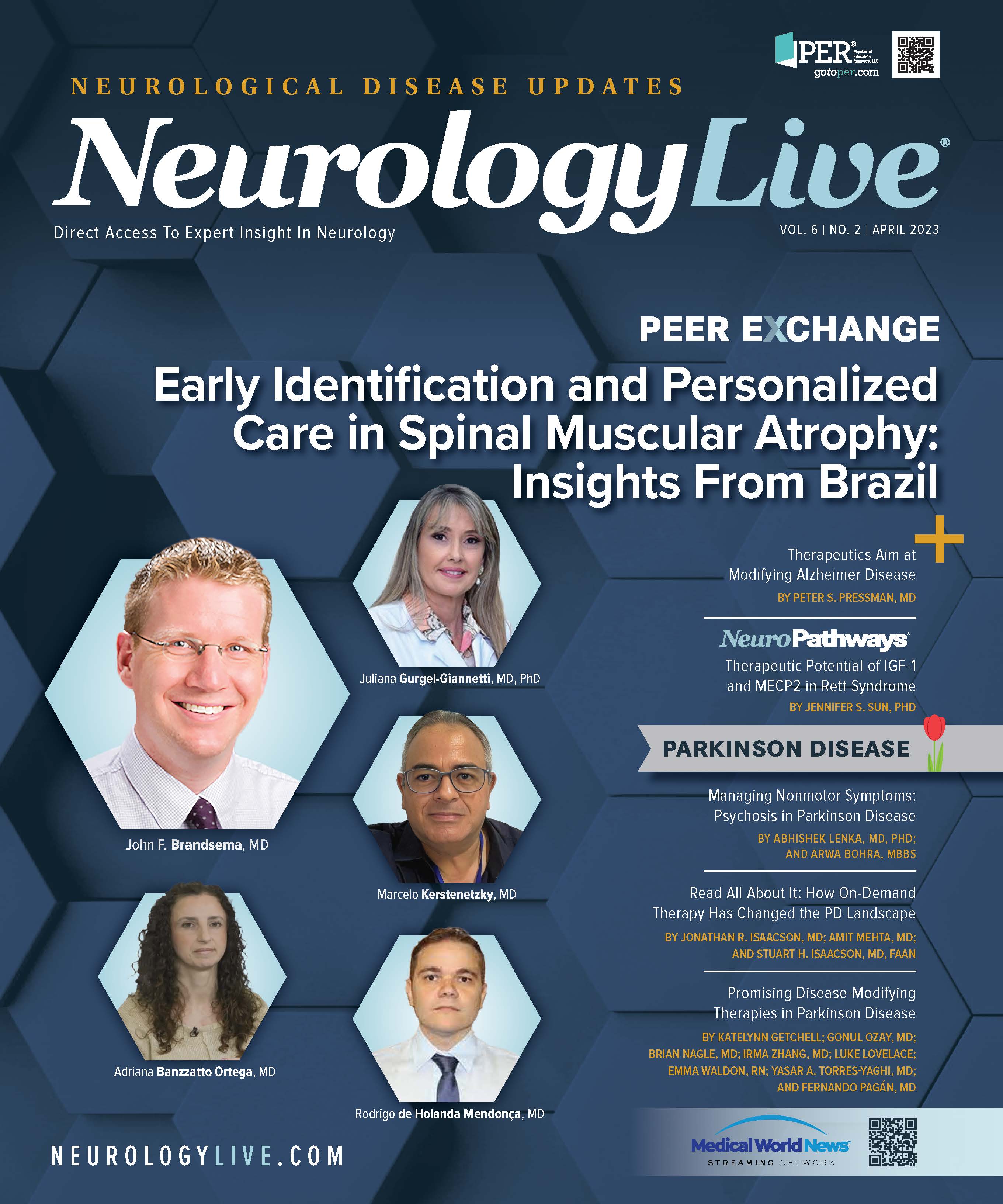Publication
Article
NeurologyLive
Zavegepant Becomes First FDA-Approved CGRP-Targeting Nasal Spray for Acute Migraine
Author(s):
The first and only approved CGRP nasal spray for acute migraine is expected to be available in pharmacies in July 2023.
Kathleen Mullin, MD

The FDA has approved zavegepant, an investigational calcitonin gene-related peptide (CGRP) receptor antagonist nasal spray, for the acute treatment of migraine with or without aura in adults. Marketed as Zavzpret, the therapeutic becomes the first and only CGRP nasal spray available for patients with migraine. Pfizer anticipates it to be available in pharmacies in July 2023.1
Zavegepant, a third generation, high affinity, selective and structurally unique agent, had its new drug application (NDA) backed by 2 pivotal double-blind, placebo-controlled studies. In both trials, the medication demonstrated statistically significant differences relative to placebo on the coprimary end points of superiority at 2 hours for pain freedom and freedom from the most bothersome symptom (MBS).
"The FDA approval of Zavzpret marks a significant breakthrough for people with migraine who need freedom from pain and prefer alternative options to oral medication,” Angela Hwang, chief commercial officer, president, Global Biopharmaceuticals Business, Pfizer, said in a statement.1 "Zavzpret underscores Pfizer’s commitment to delivering an additional treatment option to help people with migraine gain relief and get back to their daily lives. Pfizer will continue to build its migraine franchise to further support the billions of people worldwide impacted by this debilitating disease."
The first trial (NCT03872453) assessed the agent in forms of 5-, 10-, and 20-mg doses vs placebo in a cohort of 1673 patients with migraine. All told, zavegepant 10 and 20 mg were more effective than placebo on the coprimary end points of pain freedom at 2 hours postdose (placebo: 15.5% [98.3% CI, 11.1, 19.8]; 10 mg: 22.5% [98.3% CI, 17.5, 27.6; P = 0.0113]; 20 mg: 23.1% [98.3% CI, 18.1, 28.2; P = 0.0055]) and freedom from the MBS at 2 hours postdose (placebo: 33.7% [98.3% CI, 28.0, 39.3]; 10 mg: 41.9% [98.3% CI, 36.0, 47.9; P = 0.0155]; 20 mg: 42.5% [98.3% CI, 36.6, 48.4; P = 0.0094]).2
In addition to meeting the coprimary end points, the agent demonstrated a duration and sustained effect profile through 48 hours (nominal P <.05). This included sustained pain freedom 2 to 24 hours (5 mg, 10 mg, and 20 mg), sustained pain freedom 2 to 48 hours (5 mg, 10 mg, and 20 mg), sustained pain relief 2 to 24 hours (5 mg, 10 mg, and 20 mg), and sustained pain relief 2 to 48 hours (5 and 10 mg).
"When a migraine hits, it has a significant negative impact on a person’s daily life,” Kathleen Mullin, MD, associate medical director, New England Institute for Neurology & Headache, said in a statement.1 "Among my migraine patients, one of the most important attributes of an acute treatment option is how quickly it works. As a nasal spray with rapid drug absorption, ZAVZPRET offers an alternative treatment option for people who need pain relief or cannot take oral medications due to nausea or vomiting, so they can get back to normal function quickly."
Announced in December 2021, the second pivotal trial (NCT04571060) not only achieved coprimary end points of pain freedom (24% vs 15%; P <.0001) and freedom from MBS (40% vs 31%; P = .0012), but also showed statistically significant differences relative to placebo across a total of 15 prespecified primary and secondary outcome measures. In the study, patients achieved return to normal function as early as 30 minutes after dosing (P <.006). Zavegepant also showed a durable efficacy profile that was superior to placebo (P <.05) on sustained pain freedom 2 to 24 hours; sustained pain freedom 2 to 48 hours; sustained pain relief 2 to 24 hours; and sustained pain relief 2 to 48 hours.3
The second pivotal study featured 1405 adults with at least 1 year of migraine, with or without aura, and had migraine attacks lasting, on average, 4 to 72 hours if untreated. Participants were randomly assigned 1:1 to zavegapant 10 mg nasal spray or matching placebo and self-treated a single migraine attack of moderate or severe pain intensity. In addition to demonstrating efficacy, the agent showed a favorable tolerability and safety profile. The most common adverse events (AEs) in either treatment group were dysgeusia (zavegapant: 21% vs placebo: 31%), nasal discomfort (4% vs 1%), and nausea (3% vs 1%). No signal of hepatoxicity due to zavegepant was identified.
REFERENCES
1. Pfizer’s Zavzpret (zavegepant) migraine nasal spray receives FDA approval. News release. Pfizer. March 10, 2023. Accessed March 10, 2023. https://www.businesswire.com/news/home/20230309005795/en/Pfizer%E2%80%99s-ZAVZPRET%E2%84%A2-zavegepant-Migraine-Nasal-Spray-Receives-FDA-Approval
2. Biohaven achieves positive topline results in pivotal phase 2/3 study of vazegepant, the first and only intranasal CGRP receptor antagonist in clinical development for the acute treatment of migraine. News release. December 17, 2019. Accessed March 10, 2023. https://www.prnewswire.com/news-releases/biohaven-achieves-positive-topline-results-in-pivotal-phase-23-study-of-vazegepant-the-first-and-only-intranasal-cgrp-receptor-antagonist-in-clinical-development-for-the-acute-treatment-of-migraine-300976000.html
3. Lipton RB, Croop R, Stock DA, et al. Safety, tolerability, and efficacy of zavegepant 10 mg nasal spray for the acute treatment of migraine in the USA: a phase 3, double-blind, randomized, placebo-controlled multicentre trial. Lancet Neurol. 2023;22(3):209-217. doi:10.1016/S1474-4422(22)00517-8





